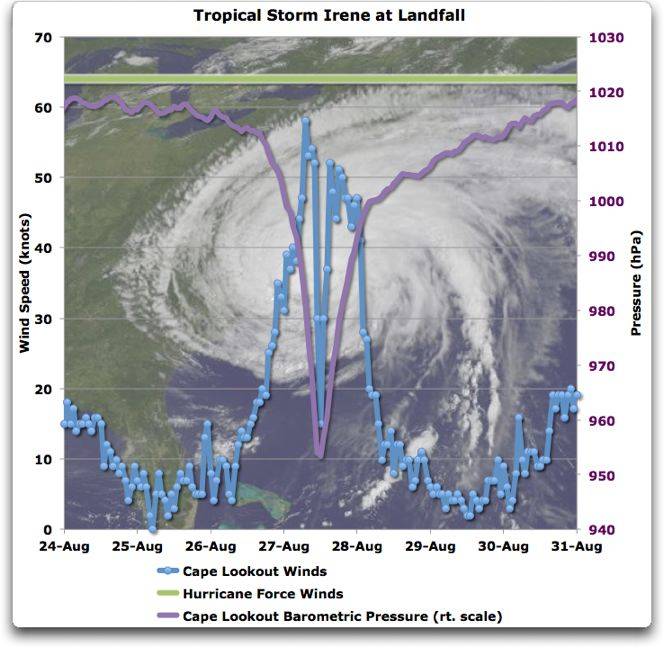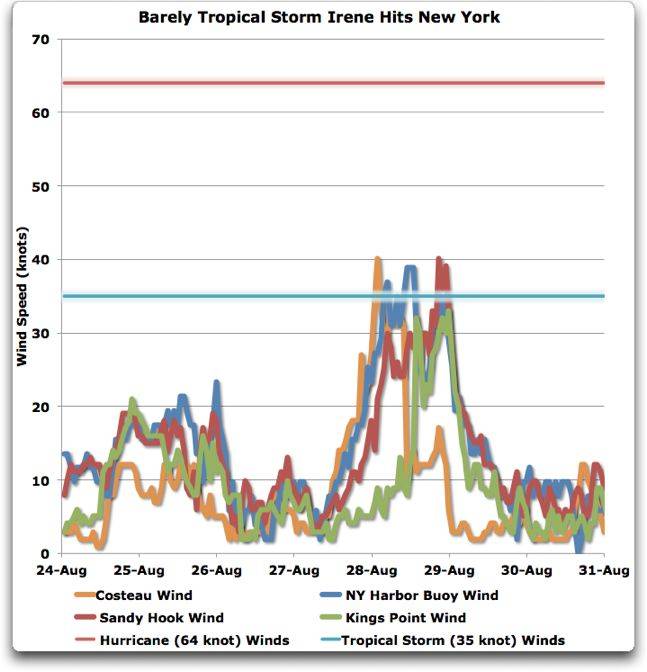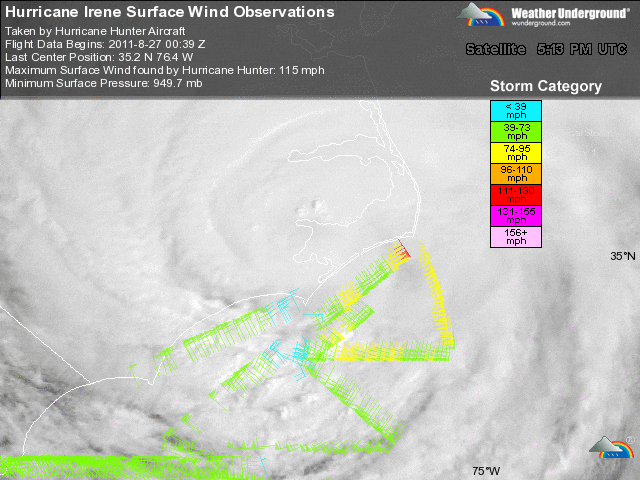wirebender
Senior Member
When is a hurricane not a hurricane? Apparently the answer to that questionis when the warmist alarmists need something to wring their hands over and feel the need to scare as much of the population as possible back into AGW lockstep.
Cape Lookout, NC was Irene's southernmost point of landfall in the US and the eye of the storm passed directly over the weather station there. In addition, there were two other stations in the area; one in Beaufort and the onslow bouy offshore and to the south of Cape Lookout; and the Hatteras station further to the north.
Here is what the station read as the eye of the storm made landfall at Cape Lookout. The purple line shows the barometric pressure falling, the blue line shows the sustained wind speed, and the green bar across the top shows the minimum sustained wind speed necessary in order for a storm to be classified as a hurricane.
Note the classic signature as the eye passes directly over the measuring station. Barometric pressure dropping steeply and wind speed falling off sharply as the eye passes.

As you can see, the sustained winds of Irene, while clearly a strong tropical storm, never approached hurricane force even at landfall, much less afterwards. Here is what she looked like upon reaching New York; barely a tropical storm.

Here is a link to just a small example of the fraud perpetrated by the alarmists who people are supposed to "trust" to tell them what is going on in an emergency:
Broadcast journo exaggerates flood - YouTube
Cape Lookout, NC was Irene's southernmost point of landfall in the US and the eye of the storm passed directly over the weather station there. In addition, there were two other stations in the area; one in Beaufort and the onslow bouy offshore and to the south of Cape Lookout; and the Hatteras station further to the north.
Here is what the station read as the eye of the storm made landfall at Cape Lookout. The purple line shows the barometric pressure falling, the blue line shows the sustained wind speed, and the green bar across the top shows the minimum sustained wind speed necessary in order for a storm to be classified as a hurricane.
Note the classic signature as the eye passes directly over the measuring station. Barometric pressure dropping steeply and wind speed falling off sharply as the eye passes.

As you can see, the sustained winds of Irene, while clearly a strong tropical storm, never approached hurricane force even at landfall, much less afterwards. Here is what she looked like upon reaching New York; barely a tropical storm.

Here is a link to just a small example of the fraud perpetrated by the alarmists who people are supposed to "trust" to tell them what is going on in an emergency:
Broadcast journo exaggerates flood - YouTube
Last edited:



